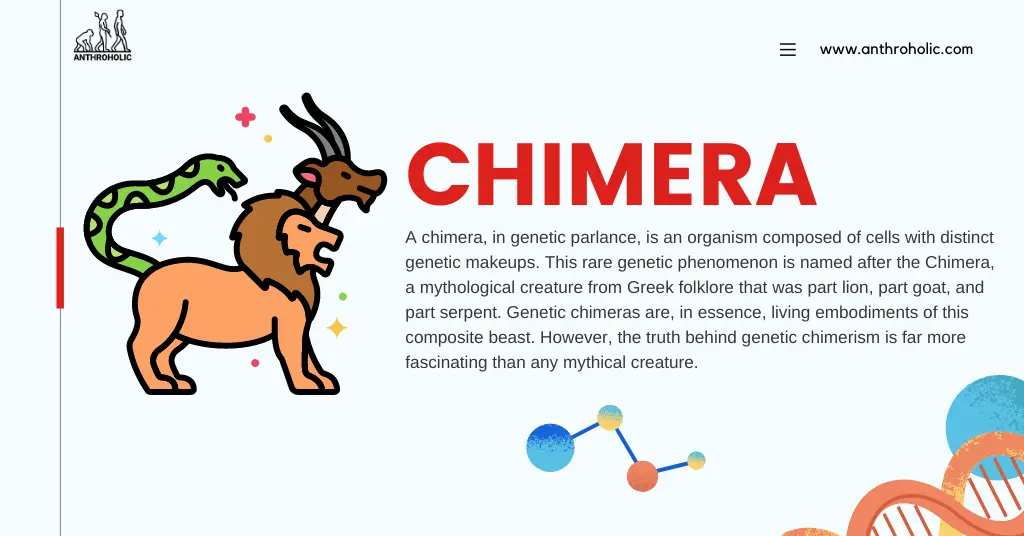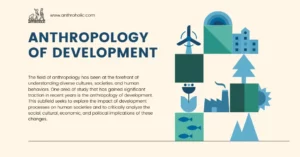AI Answer Evaluation Platform Live Now. Try Free Answer Evaluation Now
Chimera
A chimera, in genetic parlance, is an organism composed of cells with distinct genetic makeups. This rare genetic phenomenon is named after the Chimera, a mythological creature from Greek folklore that was part lion, part goat, and part serpent. Genetic chimeras are, in essence, living embodiments of this composite beast. However, the truth behind genetic chimerism is far more fascinating than any mythical creature.

The Concept of Genetic Chimerism
A chimera originates when two or more fertilized eggs, or zygotes, combine at an early stage of development. Instead of developing into separate individuals, they form a single entity with multiple cell lines.
Distinguishing Between Chimeras, Mosaics, and Hybrids
- Chimera: An organism with cells from different zygotes. The different cell lines might come from the same or different species.
- Mosaic: An organism with genetically different cells from the same zygote. Mosaicism results from mutations that occur after fertilization.
- Hybrid: An organism that is the offspring of two animals or plants of different species or varieties, like a mule (a hybrid of a donkey and a horse).
Evidences of Chimerism
Humans
Chimerism in humans is often undetected, as chimeras can appear physically and biologically normal. However, certain instances shed light on this phenomenon:
- Blood Type Chimerism: This refers to individuals who have more than one blood type. A 1953 study of a woman revealed she had a blood type different from that of her children, leading to the discovery of her chimerism.
- Skin Pigmentation Chimerism: Some chimeras may have patches of skin or eyes of different colors, reflecting different cell lines.
Animals
In animals, chimerism has been observed and purposefully created:
- Mice: Scientists have created genetically modified chimeric mice to study various biological phenomena.
- Cats: A tortoiseshell or calico cat, predominantly female, can be a chimera. The distinctively mottled coat coloration arises from different cell lines with different color genes.
| Species | Evidence |
|---|---|
| Humans | Blood Type Chimerism, Skin Pigmentation Chimerism |
| Mice | Genetically Modified Chimeric Mice |
| Cats | Distinct Coat Coloration |
Implications of Chimerism
Chimerism is not merely a genetic curiosity; it has significant implications in various fields:
- Medical Science: Chimeras could revolutionize organ transplants by potentially creating organs that the recipient’s immune system won’t reject.
- Forensic Science: Chimerism complicates DNA analysis and can lead to unexpected results in paternity tests and criminal investigations.
- Evolutionary Biology: Chimerism raises intriguing questions about the nature of individuality and species evolution.
Medical Applications
In the field of regenerative medicine, the concept of chimerism holds immense promise. While genetic chimerism may sound like something out of a science fiction novel, it is a genuine and naturally occurring phenomenon. Understanding this genetic marvel opens up new frontiers of possibilities. The potential to grow replacement organs tailored to a patient’s genetic makeup could eliminate the need for immunosuppressive drugs post-transplant. This technology, while in its nascent stages, could revolutionize medical treatments in the future.
Conservation Efforts
Chimeras also open up possibilities for the conservation of endangered species. Scientists could theoretically create chimeric animals using the preserved genetic material of extinct or endangered species.
Challenges in Realization
While the prospects of chimerism are exciting, achieving these scientific breakthroughs is fraught with challenges:
- Technological Limitations: The science of creating chimeras, especially for medical applications, is still developing. We need more advanced genetic tools and a better understanding of embryonic development.
- Regulatory Hurdles: Current regulations, both national and international, have not fully caught up with the rapidly evolving field of genetic chimerism. Regulatory clarity is needed to facilitate further research and development.
The Ethics of Chimerism
Like many advancements in genetics, chimerism brings with it a slew of ethical concerns that must be addressed:
- Identity and Rights: If a chimera possesses human cells, at what point does it become human? And what rights should it have?
- Consent: Who can provide informed consent for the creation and use of chimeras, particularly those with human cells?
- Animal Welfare: How do we ensure that animals used in chimera research are treated ethically and humanely?
Conclusion
From the stuff of myths and legends, chimeras have evolved into a captivating subject of genetic study. As we unravel the mysteries of genetic chimerism, we inch closer to a future where science fiction may indeed become science fact. However, as we tread this intriguing genetic journey, it is crucial to balance the promises of chimerism with its potential perils.
References
- Race, R. R., Sanger, R., & Lawler, S. D. (1953). Blood groups in man. Oxford, England: Blackwell Scientific Publications.
- Gartler, S. M., & Goldman, M. A. (1990). Chimeric Mice and Fetal Research. In M. E. Faberow (Ed.), Chimeric mice in scientific research (pp. 111–120). CRC Press.
- Lyons, L. A., Imes, D. L., Rah, H. C., & Grahn, R. A. (2005). Tyrosinase mutations associated with Siamese and Burmese patterns in the domestic cat (Felis catus). Animal Genetics, 36(2), 119–126.
- Wu, J., Platero-Luengo, A., Sakurai, M., Sugawara, A., Gil, M. A., Yamauchi, T., … & Belmonte, J. C. (2017). Interspecies Chimerism with Mammalian Pluripotent Stem Cells. Cell, 168(3), 473-486.e15.
- Loi, P., Iuso, D., & Czernik, M. (2016). A new breed of scientists for conservation. Reproduction in Domestic Animals, 51, 21-26.




